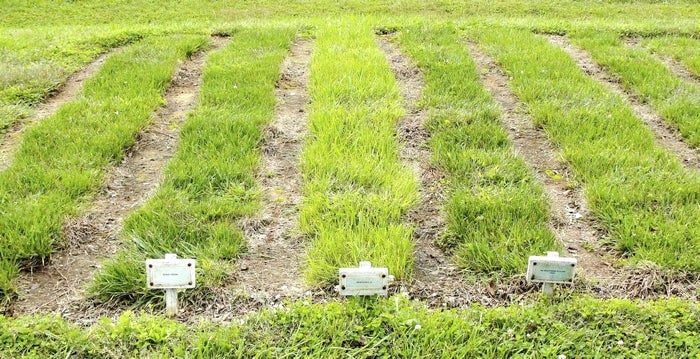Darrell Blackwelder: Rowan lawns look terrible
Published 12:00 am Friday, March 6, 2015

- Cooperative Extension Turf test plots at the Agricultural Center.
Buds are swelling and daffodils and crocus are beginning to emerge even with one of the coldest Februarys on record.
Unfortunately, most of the lawns throughout the county look terrible and are in need of some of rejuvenation. Judging from the phone and email inquiries already received so far this spring, lawn establishment will be a major focus of homeowners in the spring.
It’s not too difficult to determine why certain areas of the lawn are thinning out or have failed to establish. In many situations too much shade will thin lawns quickly, especially during the heat of the summer.
Lawns which lack proper fertility easily thin out during the heat of the summer. Poor root establishment is often a result of improper levels of phosphorous. This is a typical problem for new construction where grading has occurred or in housing developments located on eroded croplands.
Those considering a total lawn makeover should wait until fall if possible. Cool season fescue lawns are typically easier to establish in the fall. However, situations exist and many cannot wait and need to seed now to stop the mud. Lawn establishment in the spring and summer is difficult, but is possible if the weather cooperates.
Normally, core aeration is done only in the fall. Core aerating now can do no harm if the lawns are extremely weak or non-existent. Coring allows fertilizer and seed to penetrate without plowing. Indigenous weeds quickly move in on thin or bare areas and the lawn becomes a hodgepodge of everything but fescue.
Soil sampling is the best method to determine soil fertility. Unfortunately, it normally takes about four to six weeks to receive a sample back from the North Carolina Department of Agriculture. Fertilization in the spring can be somewhat tricky. Many tend to over fertilize in the spring.
NC Department of Agriculture tests soils for maximum growth. We’re still in the peak season, Nov. 26-March 31. Soil test samples are $4 per sample.
Only one pound of actual nitrogen should be used in the spring. Slow release, premium fertilizers, are generally recommended because they slowly release fertlizer over a long period of time. Slowly releasing nitrogen during the spring allows grass to green but grow slowly, eliminating excessive growth. Excessive turf growth can be a major problem in the spring.
Another problem in association with spring fertilization is over-liming. Liming every year may cause nutritional problems. In most instances, liming should only be done every three years. However, the only real way to determine a soil’s fertility level is have the soil tested. Go to http://www.turffiles.ncsu.edu/articles/tf0017.aspx for more detailed information on turf grass care.
Darrell Blackwelder is the County Extension Director in Rowan County with horticulture responsibilities with the North Carolina Cooperative Extension Service in Rowan County. Learn more about Cooperative Extension events and activities by calling 704-216-8970 Facebook or online at www.rowanextension.com




